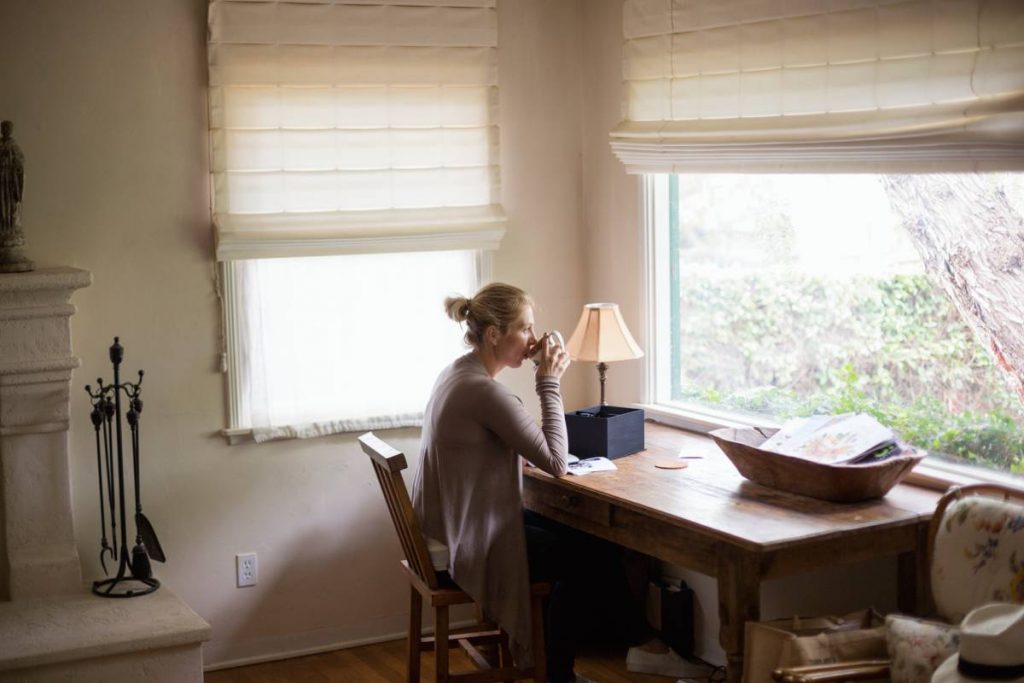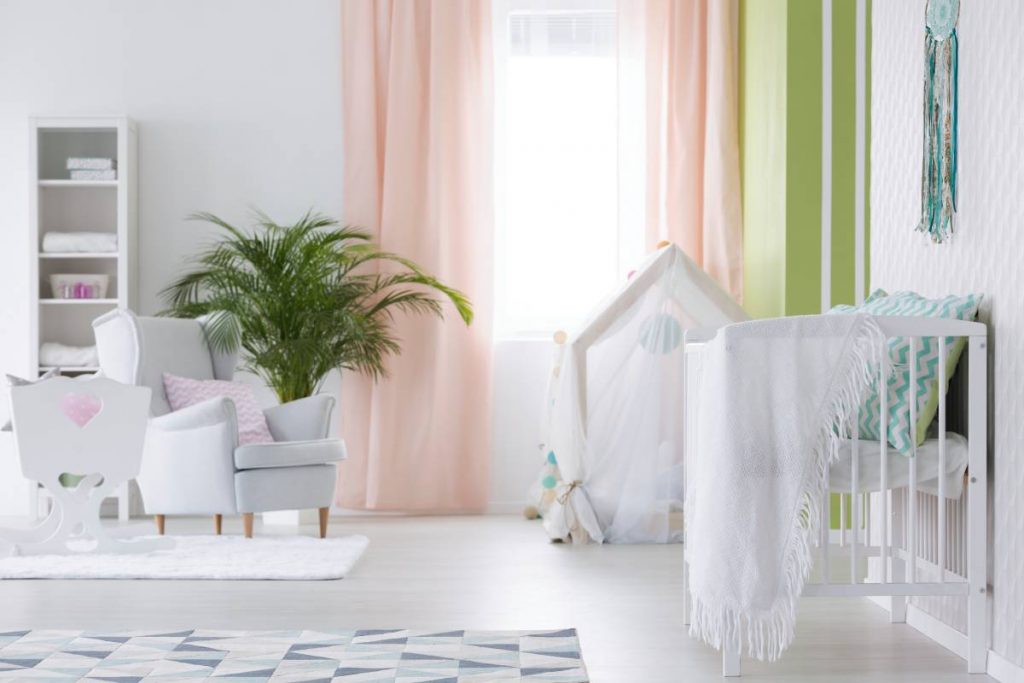Choosing between curtains, drapes, or blinds for your windows is an important decision that can significantly impact the aesthetics, functionality, and ambience of your living space. With a wide array of options available, it’s essential to consider several factors to ensure you make the right choice.
In this guide, we’ll explore how to select the most suitable window treatment based on your needs, style preferences, light control requirements, privacy concerns, and budget considerations. Whether you’re aiming for a classic, elegant look with curtains and drapes or prefer the sleek, contemporary appeal of blinds, understanding these key considerations will help you make an informed decision that enhances the beauty and comfort of your home.
How much do each type of blinds cost in Australia?
Blinds come in various types, offering a range of styles and functionalities. According to this, here’s an overview of some common types of blinds:
- Roller blinds
- Roman blinds
- Timber Venetian blinds
- Plantation shutters
- Vertical blinds
- Newer options like honeycomb blinds for insulation and sunscreen blinds for sun protection.
Now, let’s delve into the pricing of these different types:
- Roller blinds typically range from $30 for basic designs to $89 for designer options.
- Double roller blinds, featuring both block-out and sheer sunscreen blinds, start at $60 and can go up to $130.
- Aluminium blinds are priced between $42 for standard colours and $55 for designer shades.
- Roman blinds start at around $44 and can go up to $70 for patterned varieties.
- Faux timber Venetian blinds begin at $64, while real timber Venetian blinds start at approximately $100.
- Plantation shutters typically cost around $100.
- Vertical blinds range from $40 for basic models to $65 for more sophisticated designs.
- Honeycomb blinds, known for their insulation properties, range from $65 to as high as $184.
- Sunscreen blinds, ideal for sun protection, are priced between $39 and $70.
These prices can vary based on factors like size, material, design complexity, and brand. When selecting blinds for your space, consider your budget, desired features, and aesthetic preferences to find the best option for your needs.

How much do each type of curtains cost in Australia?
Curtains, like blinds, come in a wide range of styles, materials, and price points in Australia. The cost of curtains can vary based on factors such as the type of fabric, size, style, brand, and any additional features like lining or customizations.
Here’s a breakdown of the average prices for different types of curtains in Australia:
- Ready-Made Curtains: Ready-made curtains are pre-made and available in standard sizes, making them a convenient and budget-friendly option for many homeowners. They come in various fabrics, colours, and styles to suit different preferences and decor schemes. In Australia, ready-made curtains typically range from AUD $30 to $300 per panel, depending on the quality of the fabric, size, and brand.
- Custom-Made Curtains: Custom-made curtains are tailored to fit specific window dimensions and often offer more options in terms of fabric, style, and features. While they tend to be more expensive than ready-made curtains, custom-made curtains allow for greater customization and a perfect fit for your windows. In Australia, custom-made curtains can cost anywhere from AUD $100 to $1000 per panel, depending on the fabric, size, and complexity of the design.
- Sheer Curtains: Sheer curtains are lightweight and translucent, providing privacy while allowing natural light to filter through. They add an elegant and airy feel to any space and are often used in conjunction with other window treatments. In Australia, sheer curtains typically range from AUD $20 to $200 per panel, depending on the fabric, size, and brand.
- Blockout Curtains: Blockout curtains are designed to block out light and provide maximum privacy and insulation. They are ideal for bedrooms, home theatres, or any room where light control is essential. Blockout curtains come in various fabrics and colours, with options for the thermal lining to improve energy efficiency. In Australia, blackout curtains generally range from AUD $50 to $500 per panel, depending on the fabric, size, and brand.
- Linen Curtains: Linen curtains are prized for their natural texture, durability, and timeless appeal. They add a touch of sophistication to any space and work well in both casual and formal settings. Linen curtains can vary in price depending on the quality of the linen and whether they are ready-made or custom-made. In Australia, linen curtains typically range from AUD $80 to $600 per panel, depending on the size, style, and brand.
- Velvet Curtains: Velvet curtains exude luxury and elegance, making them a popular choice for formal living rooms, dining rooms, or home offices. Velvet curtains come in various colours and textures, adding richness and depth to any interior. In Australia, velvet curtains generally range from AUD $100 to $800 per panel, depending on the quality of the velvet, size, and brand.
- Silk Curtains: Silk curtains are known for their lustrous sheen and luxurious feel, making them a high-end option for upscale interiors. Silk curtains come in a range of colours and patterns, adding a touch of opulence to any room. In Australia, silk curtains can cost anywhere from AUD $200 to $1500 per panel, depending on the quality of the silk, size, and brand.
When budgeting for curtains, it’s essential to consider additional costs such as curtain rods, hardware, and installation fees, especially if you’re not installing them yourself. Additionally, customizations like lining, pleating, or embellishments will also affect the overall price. For accurate pricing, it’s best to consult with local suppliers or retailers in Australia who can provide specific quotes based on your preferences and requirements.

What affects the cost of curtains and blinds?
Several factors influence the cost of curtains and blinds, making them variable across different options. Here are some key factors that affect pricing:
Material Quality
The type and quality of materials used significantly impact the cost. For example, curtains made from natural fibres like silk, linen, or velvet tend to be more expensive than those made from synthetic materials like polyester or nylon. Similarly, blinds made from high-quality wood or aluminium will be pricier than those made from PVC or vinyl.
Customization
Customized curtains and blinds, tailored to fit specific window sizes or featuring unique designs, will generally cost more than ready-made or standard-sized options. Customization may include fabric selection, lining options, pleating styles, and special features like motorization or remote control.
Size and Coverage
The size of the window or area to be covered directly affects the cost. Larger windows or spaces will require more fabric or materials, driving up the overall price. Additionally, curtains and blinds designed for speciality windows, such as bay windows or skylights, may require custom solutions, increasing the cost further.
Style and Design
Different styles and designs of curtains and blinds come with varying price points. For example, intricate patterns, elaborate pleating, or unique finishes may increase the cost due to the complexity of manufacturing or the use of premium materials.
Brand and Manufacturer
Established brands and manufacturers often command higher prices due to their reputation for quality and craftsmanship. While lesser-known or generic brands may offer more budget-friendly options, they may compromise on quality or durability.
Additional Features
Certain features and functionalities, such as blackout lining, thermal insulation, UV protection, or motorization, can add to the cost of curtains and blinds. Advanced technologies and automation systems also contribute to higher price tags.
Installation
The cost of installation, whether done professionally or as a DIY project, should be factored into the overall budget. Professional installation services may incur additional fees but ensure proper fitting and functionality.
Location and Market Trends
Regional factors, market demand, and economic conditions can influence pricing variations across different locations. In areas with higher living costs or greater demand for premium home furnishings, prices may be higher compared to less affluent or competitive markets.

How to choose curtains, drapes or blinds?
Determine Your Needs
Consider the primary purpose of the window treatment. Are you looking to control light, maintain privacy, enhance insulation, or simply add decorative flair to your space? Identifying your needs will guide you towards the most suitable option.
Assess Your Style
Consider the overall style and decor of your room. Curtains and drapes offer softness, texture, and elegance, making them ideal for traditional, classic, or formal interiors. On the other hand, blinds provide a sleek, contemporary look that suits modern or minimalist spaces. Choose a window treatment that complements the existing style of your room.
Consider Light Control
Evaluate how much light you want to allow into the room. Sheer curtains offer minimal light filtering and are perfect for maintaining privacy while allowing natural light to penetrate. If you need more light control, consider options like blackout curtains or blinds with adjustable slats or shades that can be opened or closed to regulate light levels.
Evaluate Privacy Needs
Determine the level of privacy you require in each room. Rooms like bedrooms and bathrooms may require heavier, more opaque window treatments like blackout curtains or blinds with privacy features, while living areas may benefit from sheer curtains or blinds that allow partial visibility.
Factor in Maintenance
Consider the ease of maintenance and cleaning. Curtains and drapes may require occasional washing or dry cleaning, depending on the fabric, while blinds are generally easier to clean with a quick wipe-down. Choose a window treatment that fits your lifestyle and maintenance preferences.
Measure Your Windows
Accurate measurements are essential to ensure a proper fit for your window treatments. Measure the width and height of your windows and consider any obstructions like handles or trim that may affect the installation of curtains, drapes, or blinds.
Budget Considerations
Set a budget for your window treatments and explore options that fall within your price range. Keep in mind that custom-made curtains or blinds with premium materials and features will typically cost more than ready-made or standard-sized options.
Test Samples
If possible, obtain fabric or material samples to see how they look and feel in your space. This will help you visualize how the window treatments will complement your existing decor and lighting conditions.
Seek Professional Advice
If you’re unsure about which option is best for your space, consider consulting with a professional interior designer or window treatment specialist. They can offer personalized recommendations based on your needs, style preferences, and budget constraints.
In conclusion
You have many options beyond just sticking to curtains, drapes, or blinds. While curtains or drapes might work well in your living room or bedroom, blinds could be a better fit for places like the laundry room, bathroom, or even another bedroom with frosted windows. Instead of limiting yourself to one option, consider getting quotes for both curtains and blinds, then compare them.
You might be pleasantly surprised by how stylish certain types of blinds can be, and you might decide to incorporate them into your interior decor. Blinds come in various styles such as pleated, sheer, or plain, and they can really enhance the look of your windows. Of course, curtains are still a great choice too, especially if you’re looking to block out light in the bedroom or living room. Don’t be afraid to think outside the box and explore all your options, including blinds, curtains, and drapes, to find the perfect fit for your home.





